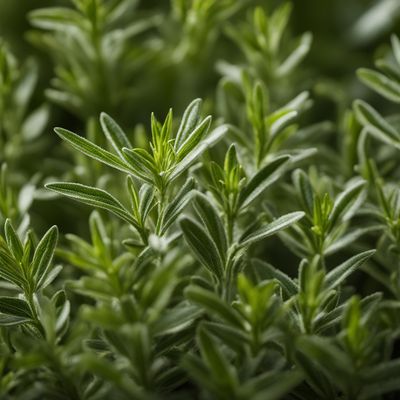
Ingredient
Balm leaves, dry
The Soothing Herb: Balm Leaves
Balm leaves are small, oval-shaped leaves with a vibrant green color. They have a distinct lemony aroma and a slightly sweet and tangy taste. The leaves are often dried to preserve their flavor and can be used in teas, salads, soups, and desserts. They provide a refreshing and calming effect to dishes.
Origins and history
Balm leaves have been used for centuries in traditional medicine and culinary practices. Native to the Mediterranean region, they were highly valued by the ancient Greeks and Romans for their soothing properties. Balm leaves were also used in medieval Europe as a remedy for various ailments.
Nutritional information
Balm leaves are low in calories and rich in antioxidants, vitamins, and minerals. They contain compounds that may have anti-inflammatory and antimicrobial properties.
Allergens
There are no known allergens associated with balm leaves.
How to select
When selecting balm leaves, look for fresh, vibrant green leaves without any signs of wilting or discoloration. The leaves should have a strong lemony aroma. If purchasing dried balm leaves, ensure they are stored in airtight containers to maintain their freshness.
Storage recommendations
To store balm leaves, wrap them in a damp paper towel and place them in a plastic bag in the refrigerator. They can also be dried and stored in airtight containers in a cool, dark place.
How to produce
Balm leaves can be easily grown in home gardens or pots. They thrive in well-drained soil and require regular watering. They can be propagated from seeds or cuttings.
Preparation tips
Balm leaves can be used in various culinary preparations. They can be steeped in hot water to make a refreshing tea, added to salads for a citrusy twist, infused in syrups for cocktails, or used as a garnish for desserts. They pair well with fruits, vegetables, and seafood.
Culinary uses
Balm leaves are commonly used in Mediterranean, Middle Eastern, and European cuisines.
Availability
Balm leaves are widely available in grocery stores, supermarkets, and specialty herb shops.
More ingredients from this category » Browse all

Angelica, dry
The Heavenly Herb: Unveiling the Secrets of Dry Angelica

Wintergreen leaves, dry
Nature's Minty Delight

Fennel, dry
The Fragrant Spice of the Mediterranean

Thyme, dry
The Essence of Thyme: A Versatile Herb

Tansy and related species, dry
The Golden Herb of Ancient Times

Borage, dry
The Vibrant Herb of Delight

Savory, dry
Umami Delight

Rosemary, dry
"The Fragrant Herb: Unveiling the Secrets of Dried Rosemary"

Marjoram, dry
Discovering the Aromatic Delights of Dry Marjoram

Woodruff, dry
The Fragrant Herb: Unveiling the Secrets of Dry Woodruff

Wormwoods, dry
The Bitter Herb: Wormwoods

Sage, dry
The Timeless Herb: Unveiling the Versatility of Dry Sage